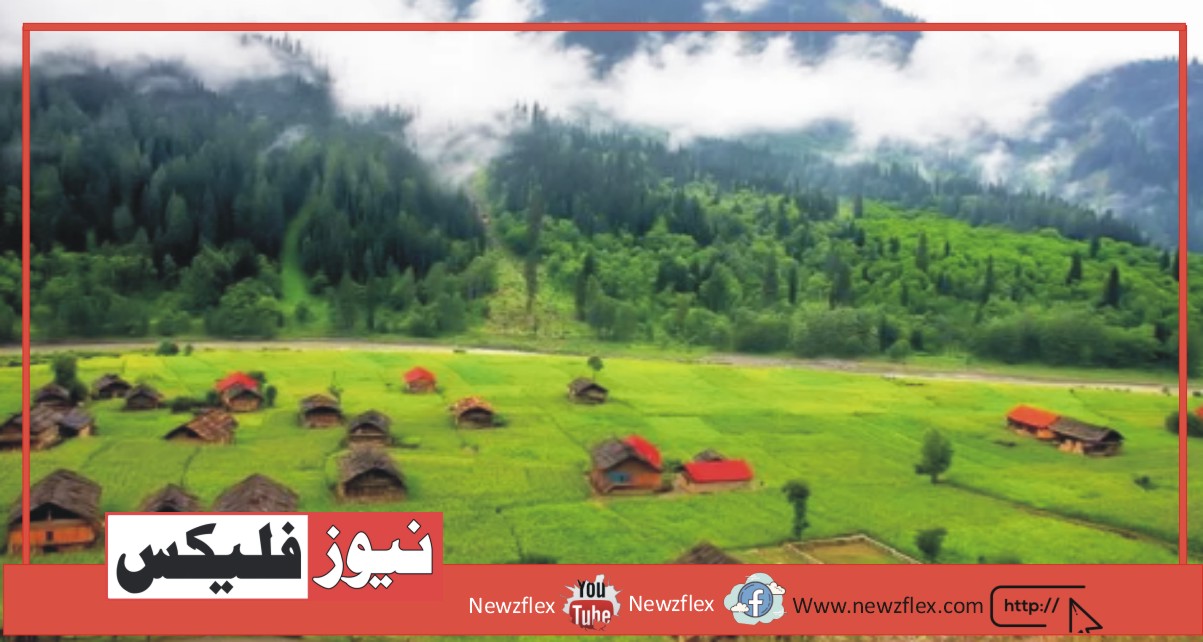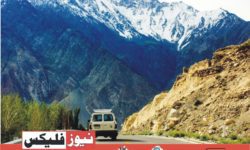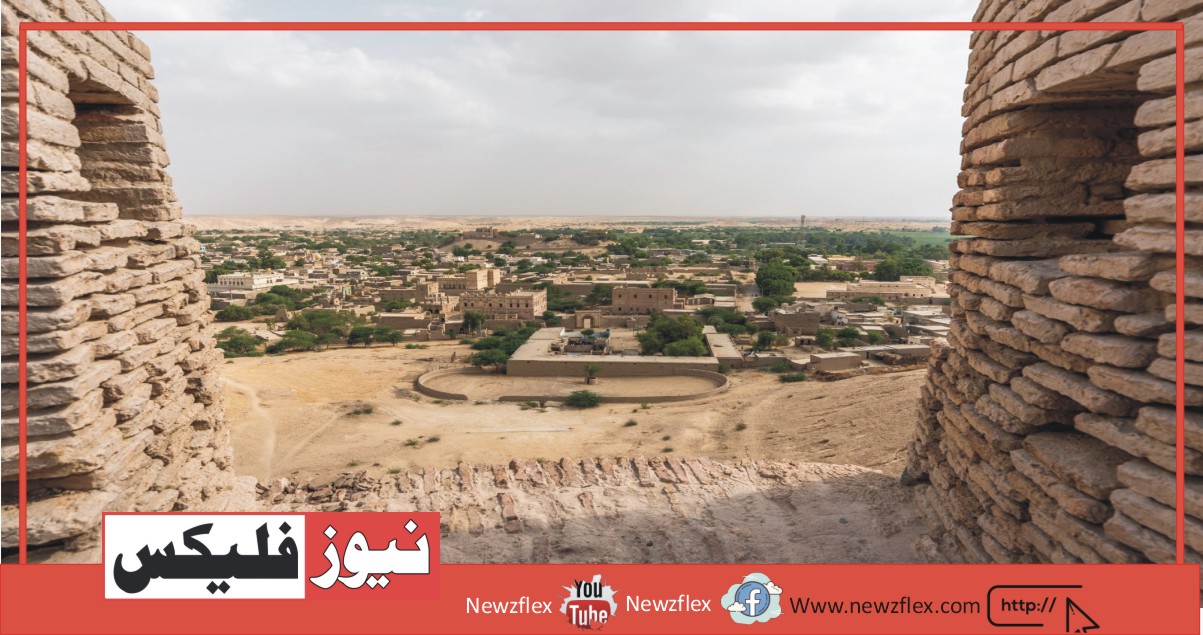
Leepa Valley – Tourist’s destination
Leepa Valley is located 45 kilometers (28 miles) from Muzaffarabad. The valley remains open for domestic tourists from May to November. A road branch off for Leepa from Naily, 45 kilometers from Muzaffarabad, climbs over the Reshian Gali (3,200 m) then descends to 1,677 m on the opposite side into the Leepa Valley. People from everywhere in the country; come to the present valley during the summers to enjoy the marvelous weather. The charming Leepa Valley consists of many villages; the foremost famous among them are Leepa, Reshian, Dao Khan, and Chananian.
Reshian
Situated 67 kilometers west of Muzaffarabad it’s also the entry point to the valley of Leepa. It’s 1674 meters (5492 ft) above sea level. From Reshian onwards one has to rent jeeps to visit Leepa Valley and every one of the places around.
Chananian
Chananian is situated opposite village Leepa near the line of Control (LOC) at an altitude of 2226 meters. It’s about 60 kilometers from Naily and is surrounded by a wide pine forest and Nullah Qazi Naag flowing nearby.
Dao Khan
75 kilometers from Muzaffarabad, Dao khan is well-known for its outstanding natural beauty. Dao Khan is recognized for its peaceful, calm, and funky environment, outstanding scenic beauty, and panoramic views.
Leepa
Leepa Village at 1921 meters (6302 ft) height from sea level lies within the center of Leepa Valley. This can be one of the foremost fascinating places in the valley. It’s nearly 38 kilometers from Reshian and almost 60 kilometers from Nail. Its grooming fields of rice, classic wooden houses of Kashmiri style, and trees of apple, walnut, and cherry present a fabulous view to the tourists during summer. Apple is grown within the valley in its different varieties, preferred being Golden, Delicious, and Kala Kullo King. Leepa is additionally very famous for its fruits and honey.
How to get there?
From Reshian, the gateway to enter the valley, there are three different routes taken to Leepa. The zigzagging Defence Road meets the valley at Hanjna, via Barthwar Gali and Bali Camp. Locals mention 72 u-turns on the way. Forest and military vehicles are a typical sight within the area. Nearly 400 jeeps ply daily from Reshian to Leepa and back. Jeeps are the sole mode of transport within the valley though motorbikes are now also seen in ever-increasing numbers on bumpy roads. One has got to cover a distance of 15 km over a stony path (more aptly a footpath) via Panjal Gali which is approximately 10,000 ft high. This route may be a shortcut to Leepa’s most significant commercial center, the Kappa Gali. The third route passes through Dao Khan, Sher Gali, and enters the vale at Muji, where Indian military personnel stands eyeball to eyeball. All three passages are blocked in winter thanks to heavy snow and inhabitants must store eatables and other items of daily usage in large quantities to consume throughout winter.
Culture
The most fascinating valley in Azad Kashmir, Leepa spells bounds for everyone who visits this valley. Leepa Valley offers an unending kind of scenic spectacular beauty, an everlasting memory of sights and sounds & the unforgettable hospitality of its people
Water within the valley is crystal clear and swiftly flowing streams like Nullah Qazi Nag are a significant source. The Nullah emerges from Indian-occupied Kashmir and runs through the full of Leepa Valley. On the opposite side of the LoC, lies the Kupwara district of Occupied Kashmir.
All over the valley, there are high walnut trees adding yellow, red, and orange colors to the scenery, there also are yellow herbs and shrubs tucked nicely into green vegetation comprising of huge conifer trees, adding variety to the current miracle of fixing colors during autumn within the valley.
Leepa is additionally famous for its typical Kashmiri style architecture, mostly within the kind of 3 storied wooden houses. A glance at the homes here makes one believe, that Leepa is a real extension of Indian-occupied Kashmir into Pakistan. The people of Leepa are highly religious and speak Kashmiri similar to Hindkoh. Urdu is nevertheless widely spoken and understood. The valley contains a population of about 75000 inhabitants who generally fancy farming, cattle rearing, and tourism-related services. Unemployment and poverty are rampant. Power shortages are a daily routine (there is merely one power generation unit at Channian) and malnutrition is common in the remainder of the country.
The paradise-like mini Kashmir in Leepa has numerous water-driven flour mills, the sole reasonable industry within the valley.
Multistoried typical Kashmiri timber houses with thick roofs product of shining metal sheets, in a very surrounding of apple, walnut, fig, pears, and plum trees are like jewels in a very crown. Leepa is legendary for its delicious white honey in addition.
The red Kashmiri rice is grown in October by the farmers in Leepa. this can be also the staple food for the people of the realm. Husking of rice is completed in a traditional way by first beating the rice stack with long sticks, thereafter, threshed along temporarily constructed ditches.
The highest peak is Shamasa Bari, which remains snowbound throughout the year.
Apple is grown in the valley in its different varieties, the most well-liked being Golden, Delicious, and Kala Kullo King. These varieties have a novel, highly tempting flavor and taste love none. Walnut is another fruit grown within the valley. It too ripens in early autumn when it’s collected, deseeded then sent to down country markets.
A village elder tells “We are unable to bury the dead. If anyone within the family dies in winter, we must anticipate about four months to bury our dead, because it’s possible only if all the snow has melted”. So while during the tourist season, this place offers one all the foremost fascinating sceneries to the tourists, life for the locals is kind of difficult during the tough winters when snow covers everything. The locals should store food ahead so as to survive, but daily chores are affected and therefore the lack of infrastructure brings many difficulties for the locals.
Though poor in infrastructure and no industry worth its name, nature has provided spectacular beauty to the present valley that may surpass even developed areas of the plains if only its tourism potential were exploited to the complete.
وادی لیپا – سیاحوں کی منزل
وادی لیپا مظفرآباد سے 45 کلومیٹر (28 میل) کے فاصلے پر واقع ہے۔ وادی مئی سے نومبر تک گھریلو سیاحوں کے لیے کھلی رہتی ہے۔ مظفرآباد سے 45 کلومیٹر دور نیلی سے لیپہ کے لیے سڑک کی شاخیں ریشیاں گلی (3,200 میٹر) پر چڑھتی ہیں اور پھر دوسری طرف سے 1,677 میٹر تک اتر کر وادی لیپا میں جاتی ہیں۔ ملک بھر سے لوگ؛ موسم گرما کے دوران اس وادی میں شاندار موسم سے لطف اندوز ہونے کے لیے آتے ہیں۔ دلکش وادی لیپا بہت سے دیہات پر مشتمل ہے۔ ان میں سب سے مشہور لیپا، ریشیان، داؤ خان اور چانانیان ہیں۔
ریشین
مظفرآباد سے 67 کلومیٹر مغرب میں واقع یہ وادی لیپا میں داخلے کا راستہ بھی ہے۔ یہ سطح سمندر سے 1674 میٹر (5492 فٹ) بلندی پر ہے۔ ریشین سے لے کر وادی لیپا اور آس پاس کے تمام مقامات پر جانے کے لیے جیپ کرایہ پر لینا پڑتی ہے۔
چنانیان
چنانیان 2226 میٹر کی بلندی پر لائن آف کنٹرول (ایل او سی) کے قریب گاؤں لیپا کے سامنے واقع ہے۔ یہ نیلی سے تقریباً 60 کلومیٹر کے فاصلے پر ہے اور دیودار کے چوڑے جنگل سے گھرا ہوا ہے اور قریب سے بہتا ہوا نالہ قاضی ناگ ہے۔
داؤ خان
مظفرآباد سے 75 کلومیٹر دور داؤ خان اپنی شاندار قدرتی خوبصورتی کے لیے مشہور ہے۔ داؤ خان اپنے پرامن، پرسکون اور ٹھنڈے ماحول، شاندار قدرتی خوبصورتی اور خوبصورت نظاروں کے لیے پہچانا جاتا ہے۔
لیپا
لیپا گاؤں سطح سمندر سے 1921 میٹر (6302 فٹ) کی بلندی پر وادی لیپا کے مرکز میں واقع ہے۔ یہ وادی کے سب سے دلکش مقامات میں سے ایک ہے۔ یہ ریشین سے تقریباً 38 کلومیٹر اور نیل سے تقریباً 60 کلومیٹر کے فاصلے پر ہے۔ یہ چاول کے کھیتوں، کشمیری طرز کے کلاسک لکڑی کے گھر اور سیب، اخروٹ اور چیری کے درخت موسم گرما میں سیاحوں کے لیے ایک شاندار منظر پیش کرتے ہیں۔ وادی میں سیب اپنی مختلف اقسام میں اگایا جاتا ہے، جن میں سب سے زیادہ مقبول گولڈن، لذیذ اور کالا کلو کنگ ہے۔ لیپا اپنے پھلوں اور شہد کے لیے بھی بہت مشہور ہے۔
وہاں کیسے پہنچیں؟
ریشیان سے، وادی میں داخل ہونے کا گیٹ وے، تین مختلف راستے ہیں جو لیپا تک جاتے ہیں۔ زگ زیگنگ ڈیفنس روڈ برتھوار گلی اور بالی کیمپ کے راستے ہنجنا میں وادی سے ملتی ہے۔ مقامی لوگ راستے میں 72 یو ٹرن کا ذکر کرتے ہیں۔ اس علاقے میں جنگلات اور فوجی گاڑیاں عام نظر آتی ہیں۔ تقریباً 400 جیپیں روزانہ ریشین سے لیپا اور پیچھے تک چلتی ہیں۔ جیپیں وادی میں نقل و حمل کا واحد ذریعہ ہیں حالانکہ اب موٹر سائیکلیں بھی کھٹائی بھری سڑک پر بڑھتی ہوئی تعداد میں نظر آتی ہیں۔ کسی کو پتھریلے راستے (زیادہ موزوں طور پر فٹ پاتھ) پر پنجال گلی سے 15 کلومیٹر کا فاصلہ طے کرنا پڑتا ہے جو تقریباً 10,000 فٹ بلند ہے۔ یہ راستہ لیپا کے سب سے اہم تجارتی مرکز کپا گلی کا شارٹ کٹ ہے۔ تیسرا راستہ داؤ خان، شیر گلی سے گزرتا ہے اور موجی کی وادی میں داخل ہوتا ہے، جہاں ہندوستانی فوجی اہلکار آنکھ مچولی کرتے کھڑے ہیں۔ تینوں راستے سردیوں میں شدید برفباری کی وجہ سے بند ہو جاتے ہیں اور باشندوں کو کھانے پینے کی اشیاء اور روز مرہ استعمال کی دیگر اشیاء کو سردیوں میں استعمال کرنے کے لیے بڑی مقدار میں ذخیرہ کرنا چاہیے۔
ثقافت
آزاد کشمیر کی سب سے دلکش وادی، لیپا اس وادی کا دورہ کرنے والے ہر شخص کو اپنے سحر میں جکڑ لیتی ہے۔ وادی لیپا قدرتی شاندار خوبصورتی، مقامات اور آوازوں کی ایک لازوال یاد اور اپنے لوگوں کی ناقابل فراموش مہمان نوازی کی لامتناہی اقسام پیش کرتی ہے۔
وادی میں پانی بالکل صاف ہے اور نالہ قاضی ناگ جیسی تیزی سے بہتی ندیاں ایک بڑا ذریعہ ہیں۔ نالہ بھارتی مقبوضہ کشمیر سے نکلتا ہے اور پوری وادی لیپا سے گزرتا ہے۔ ایل او سی کے دوسری طرف مقبوضہ کشمیر کا ضلع کپواڑہ واقع ہے۔ پوری وادی میں اخروٹ کے اونچے درخت ہیں جو مناظر میں پیلے، سرخ اور نارنجی رنگوں کو شامل کر رہے ہیں، وہاں پیلے رنگ کی جڑی بوٹیاں اور جھاڑیاں بھی ہیں جو سبز پودوں پر مشتمل ہیں جن میں بڑے مخروطی درخت شامل ہیں، جو موسم خزاں کے دوران بدلتے ہوئے رنگوں کے اس معجزے میں مختلف قسم کا اضافہ کرتے ہیں۔
لیپا اپنے مخصوص کشمیری طرز تعمیر کے لیے بھی مشہور ہے، زیادہ تر 3 منزلہ لکڑی کے مکانات کی شکل میں۔ یہاں کے مکانات پر ایک نظر ڈالنے سے یہ یقین ہوتا ہے کہ لیپا ہندوستانی مقبوضہ کشمیر کی پاکستان میں حقیقی توسیع ہے۔ لیپا کے لوگ انتہائی مذہبی ہیں اور کشمیری کے ساتھ ساتھ ہندکوہ بھی بولتے ہیں۔ اردو اس کے باوجود بڑے پیمانے پر بولی اور سمجھی جاتی ہے۔ وادی کی آبادی تقریباً 75000 باشندوں پر مشتمل ہے جو عام طور پر کھیتی باڑی، مویشی پالنے اور سیاحت سے متعلق خدمات میں شامل ہیں۔ بے روزگاری اور غربت عروج پر ہے۔ بجلی کی قلت روزمرہ کا معمول ہے (چنان میں صرف ایک پاور جنریشن یونٹ ہے) اور ملک کے دیگر حصوں کی طرح غذائی قلت عام ہے۔
لیپا میں منی کشمیر جیسی جنت میں پانی سے چلنے والی متعدد فلور ملیں ہیں، جو وادی کی واحد صنعت ہے۔
سیب، اخروٹ، انجیر، ناشپاتی اور بیر کے درختوں کے گھیر میں چمکتی ہوئی دھات کی چادروں سے بنی موٹی چھتوں والے کثیر المنزلہ عام کشمیری لکڑی کے گھر تاج میں جواہرات کی طرح ہیں۔ لیپا اپنے مزیدار سفید شہد کے لیے بھی مشہور ہے۔ سرخ کشمیری چاول اکتوبر میں کاشتکار لیپا میں اگاتے ہیں۔ یہ علاقے کے لوگوں کی اہم خوراک بھی ہے۔ چاول کی بھوسی روایتی طریقے سے پہلے چاول کے ڈھیر کو لمبی لاٹھیوں سے پیٹ کر، اس کے بعد عارضی طور پر بنائے گئے گڑھوں کے ساتھ جھاڑی کی جاتی ہے۔
سب سے اونچی چوٹی شماسہ باری ہے جو سال بھر برف میں لپٹی رہتی ہے۔
وادی میں سیب اپنی مختلف اقسام میں اگایا جاتا ہے، جن میں سب سے زیادہ مقبول گولڈن، لذیذ اور کالا کلو کنگ ہے۔ ان اقسام کا منفرد، انتہائی پرکشش ذائقہ اور ذائقہ کسی کے مقابلے میں نہیں ہے۔ اخروٹ وادی میں اگنے والا ایک اور پھل ہے۔ یہ بھی موسم خزاں کے اوائل میں پک جاتا ہے جب اسے اکٹھا کیا جاتا ہے، اس کا بیج نکالا جاتا ہے اور پھر ملک کی منڈیوں میں بھیج دیا جاتا ہے۔
گاؤں کے ایک بزرگ بتاتے ہیں ‘ہم میت کو دفنانے سے قاصر ہیں۔ اگر خاندان میں کوئی سردیوں میں مر جائے تو ہمیں اپنے مردہ کو دفنانے کے لیے تقریباً چار ماہ انتظار کرنا چاہیے، کیونکہ یہ تب ہی ممکن ہے جب تمام برف پگھل جائے۔ لہٰذا جہاں سیاحتی موسم کے دوران، یہ جگہ سیاحوں کے لیے سب سے زیادہ دلکش مناظر پیش کرتی ہے، لیکن سخت سردیوں میں جب برف ہر چیز کو ڈھانپ لیتی ہے تو مقامی لوگوں کے لیے زندگی کافی مشکل ہوتی ہے۔ مقامی لوگوں کو زندہ رہنے کے لیے پہلے سے خوراک ذخیرہ کرنا پڑتی ہے، روزمرہ کے کام متاثر ہوتے ہیں اور انفراسٹرکچر کی کمی مقامی لوگوں کے لیے بہت سی مشکلات کا باعث بنتی ہے۔
اگرچہ بنیادی ڈھانچے میں ناقص اور کوئی صنعت اس کے نام کی نہیں ہے، لیکن قدرت نے اس وادی کو شاندار خوبصورتی فراہم کی ہے جو میدانی علاقوں کے ترقی یافتہ علاقوں کو بھی پیچھے چھوڑ سکتی ہے اگر صرف اس کی سیاحتی صلاحیتوں سے بھرپور فائدہ اٹھایا جائے۔








